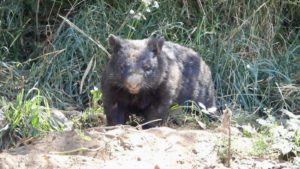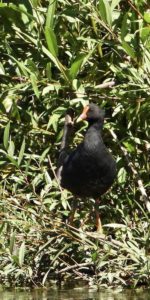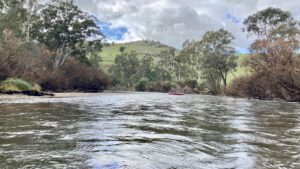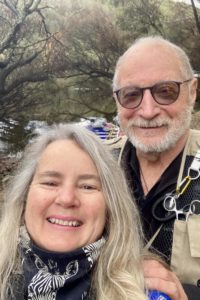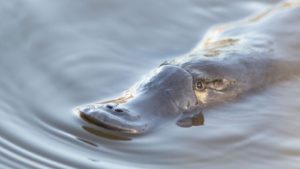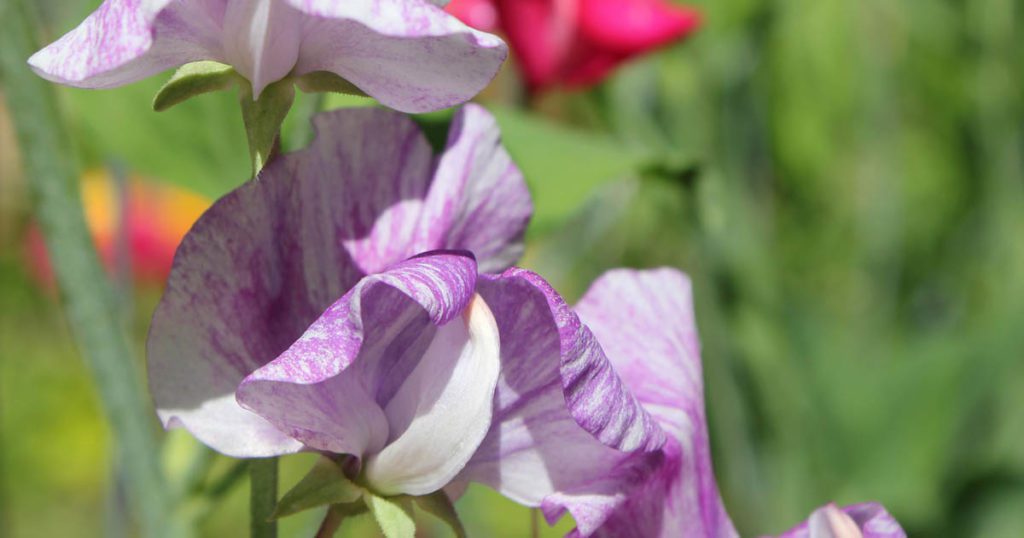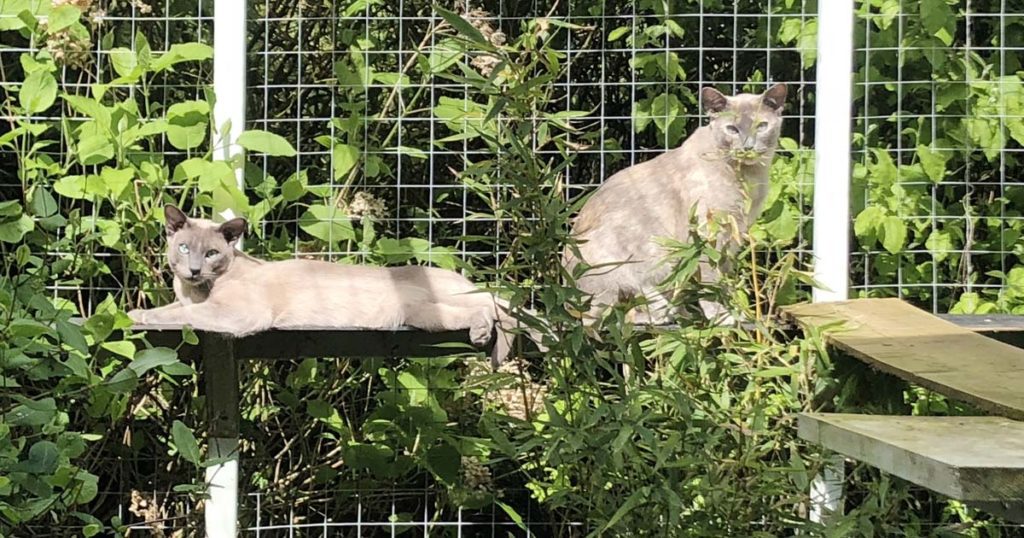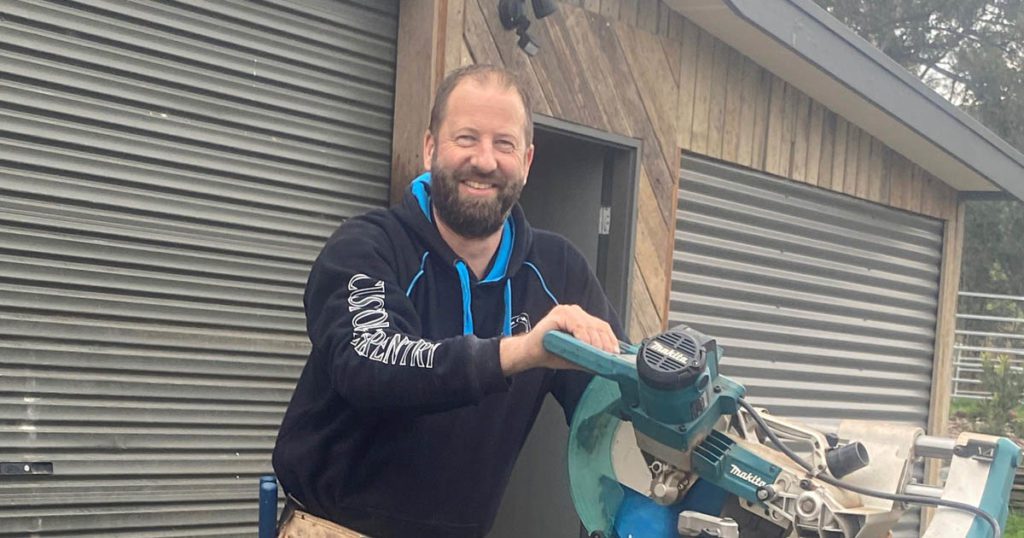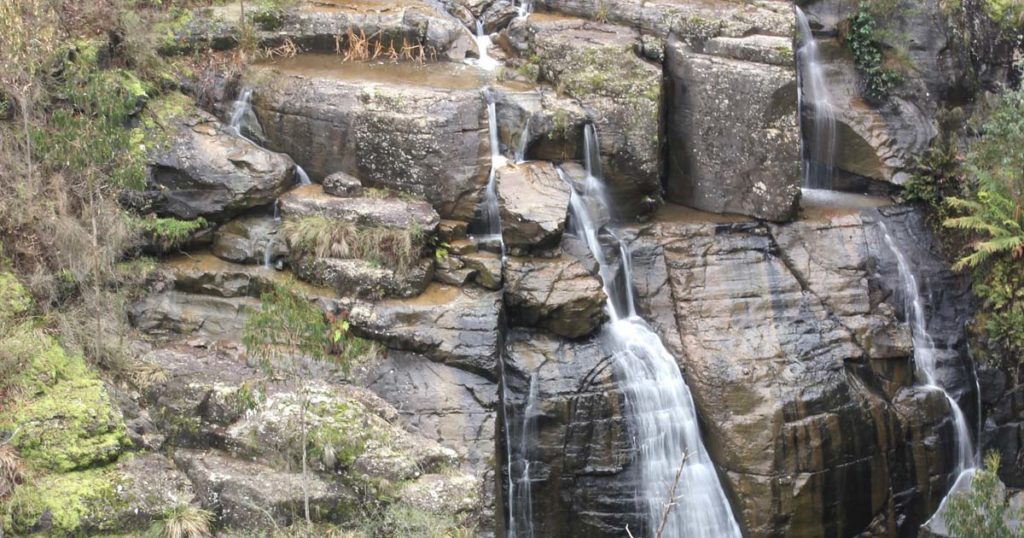By Emily Friedel
For over 30 years, Geoff Proctor has been traversing the Murrindindi Shire’s waterways to share their beauty with others. Among these waterways, the Goulburn River has a special place in his heart, as do the many platypus that call it home.
Geoff conducts his platypus tours in a rubber raft, quietly drifting down the river with the current or gently steered with oars to minimise disturbance. Those who accompany him are treated to plenty of platypus sightings, no matter what the time of day, and may also get a glimpse of some other local wildlife. At present, Geoff operates on word of mouth, and earlier this year a visiting Swiss family were lucky enough to get word of his tours while holidaying in the area.
“They had the best day out. We came along, and first of all we saw a platypus early in the trip. Then we came around a corner and there was a wombat sitting on the bank of the river, so that was pretty special. And sure enough, we went around the next corner and there was a kangaroo,” Geoff says.
Having spent so much time with the Goulburn’s platypus population over the last three decades, Geoff is confident they are doing well – unlike populations in some other areas. Even after last year’s floods, Geoff says they seem to have bounced back.
“We do tours on other rivers, but the Goulburn is the platypus Mecca. The best we’ve seen in one day paddling down the river is 40. Even the last time we went out [in early June] we saw 25. We were a bit concerned after the floods. Initially we didn’t see many after the floods, but they’re back again now.”
Geoff puts his keen observations to good use, regularly reporting sightings to the Australian Platypus Conservancy (APC) website and communicating other noteworthy information directly to researchers. Geoff is passionate about supporting efforts to conserve platypus and hopes others will get involved too.
“We’re exceptionally lucky to have a river that has a population that anyone can come down and see – they don’t have to come with me to see one, they just need to go down to their local waterway. And if they do, I strongly encourage them to go online and register the sightings because that helps the Platypus Conservancy to get a real picture,” he says.
Citizen science is crucial for keeping track of platypus and understanding how they’re faring in the wild, according to biologist and director of the Australian Platypus Conservancy, Geoff Williams. He explains why the public’s help is so important, and for those new to platypus watching, why a platypus tour may help them hone their citizen scientist skills.
“The platypus is a very difficult species to study in the wild, and there is much that we do not know about its current status and distribution. Survey techniques used by researchers, such as live-trapping or eDNA sampling, are extremely labour-intensive and costly. That is why any report of a sighting is valuable in adding to the picture of where platypus currently occur. Even better, standardised visual surveys using the Australian Platypus Monitoring Network are a great way for citizen scientists to help keep track of local platypus numbers over time.
“There is a popular myth that platypus are almost impossible to spot in the wild. In fact, they are relatively easy to observe if you are prepared to be still, quiet and have patience. But, having an experienced platypus spotter such as Geoff Proctor on hand to point out the key signs to look for is a huge advantage for any novice.”
While Geoff Proctor’s local platypus surveillance operation suggests the Goulburn’s population is doing well, he says they still need help. In particular, he has experienced first-hand the problems that litter causes for these semi-aquatic animals.
“The Goulburn isn’t as bad as creeks around Melbourne where you get a lot of rubbish. Out biggest thing is fishing line. We have caught a couple [of platypus] and have had to cut the fishing line off them after they’ve gotten tangled in it. It’s always good if you’ve got fisherman on board to explain to them, don’t just throw your fishing line away, take it home and put it in the bin,” he says.
Geoff Williams describes why rubbish is such a problem for platypus and fishing line is especially harmful to this species.
“Litter entanglement is a big problem because platypus mainly search for food at the bottom of a waterway, where rubbish accumulates. The platypus’ front foot is also highly specialised to function as a paddle – very good for swimming, but totally incapable of pulling off an entangling item. So, once litter slips around an animal’s neck or chest, it tends to stay there and gradually rubs through skin and muscle, eventually causing serious injuries and even death.
“Of all the many types of litter that get caught around platypus, discarded fishing line is probably the worst. Whereas some other types of litter, such as elastic bands, may eventually break and fall off, fishing line (even if it is of the ‘degradable’ type) will be virtually impossible for the platypus to remove before horrific injuries occur. We once had a platypus brought into us where the line had cut right through the animal’s ribs resulting in a slow and terrible death.”
Such issues only provide greater motivation for Geoff Proctor to continue running his tours and share his knowledge about the Murrindindi Shire’s platypus. And given his long-term investment of time in watching and learning about these fascinating creatures, Geoff is uniquely placed to give a truly local perspective on what they get up to.
“The Goulburn River is a bit different to other rivers for the platypus because we don’t get the really high water in winter normally because they close the lake down to store water, and we get it from November onwards. And the platypus have actually modified their breeding habits; they’re a little bit later in the Goulburn than elsewhere,” he says.
“Normally you’d see young in September, but you won’t see them here until October at the earliest and normally in November. This is because a platypus likes to have one burrow underwater and then one above water, so if the river’s come up, they have to modify when they breed so that one burrow is above the water.”
With the weather warming up, spring is generally a wonderful time to see the Goulburn and its platypus inhabitants. However, based on Geoff Proctor’s observations of Goulburn platypus behaviour, a late spring trip may improve the odds of seeing some offspring. And they may be checking you out as much as you’re checking them out.
“You certainly know when mum’s kicked the babies out of the nest because the younger ones aren’t as flighty, so they will hang around when you’re paddling.”
Geoff says that not knowing exactly what you’ll see on each tour is one of the joys of going out on the Goulburn River. But there is one thing that is pretty much guaranteed for every trip: a greater appreciation for this beautiful waterway and the platypus that live in it.
To find out more about Geoff Proctor’s tours and get acquainted with the Murrindindi Shire’s resident platypus population, phone Geoff on 0417 028 004 or Sue on 0499 979 800 or email platypusescapes@gmail.com.
For more information on the Australian Platypus Conservancy or to register platypus or rakali (water rat) sightings go to platypus.asn.au
